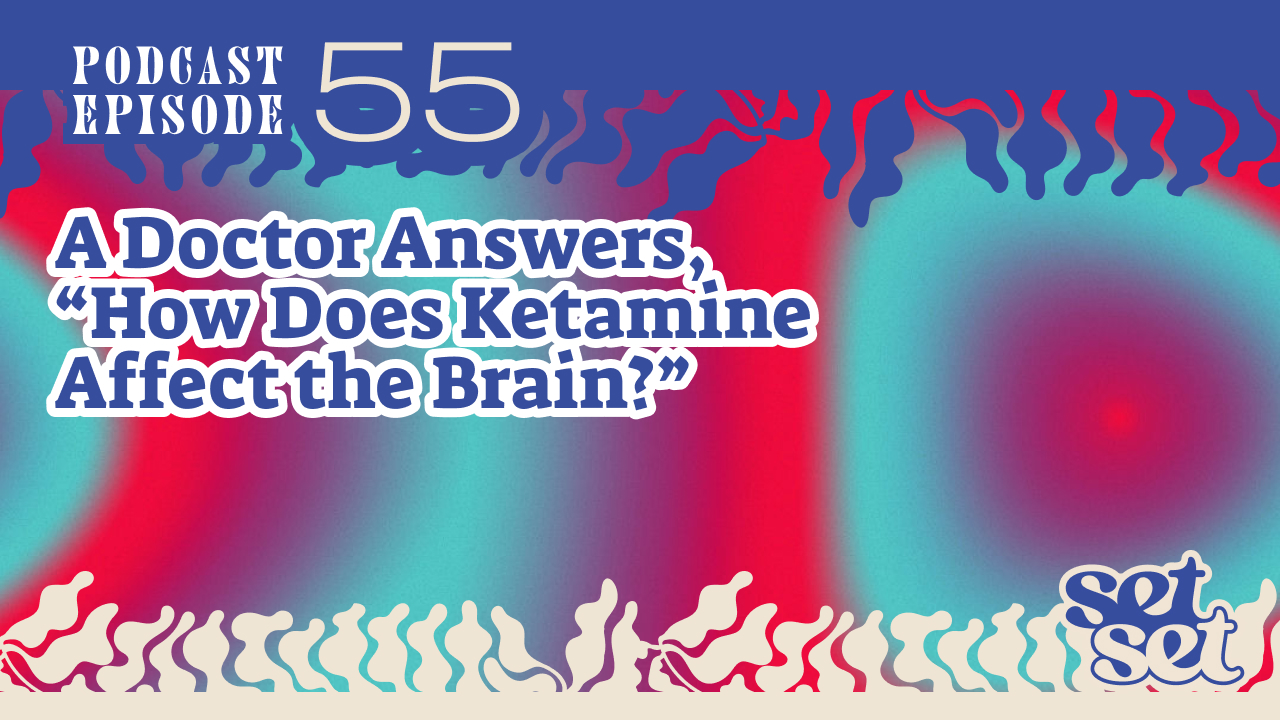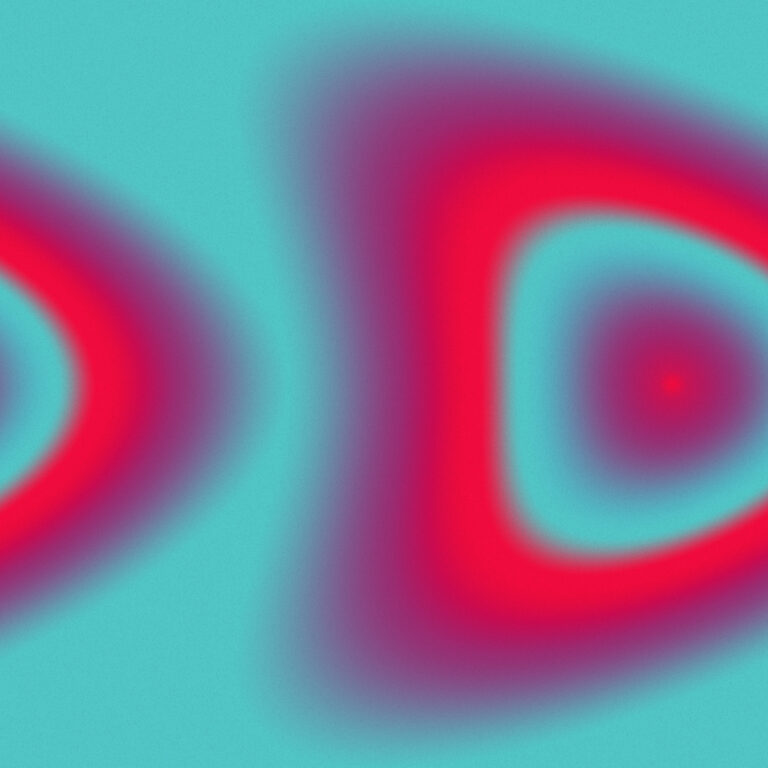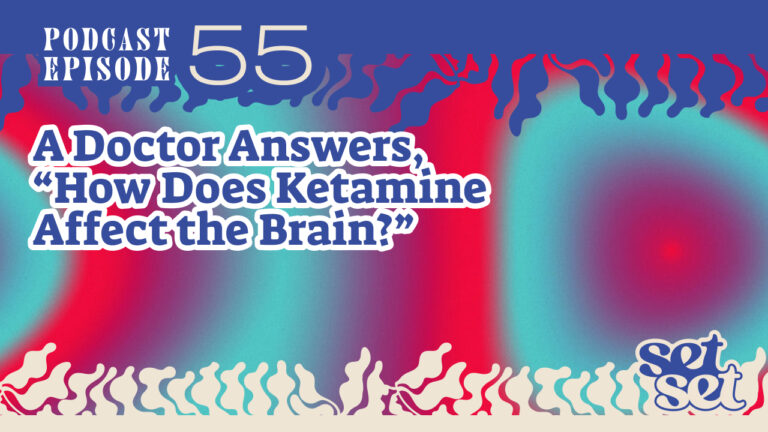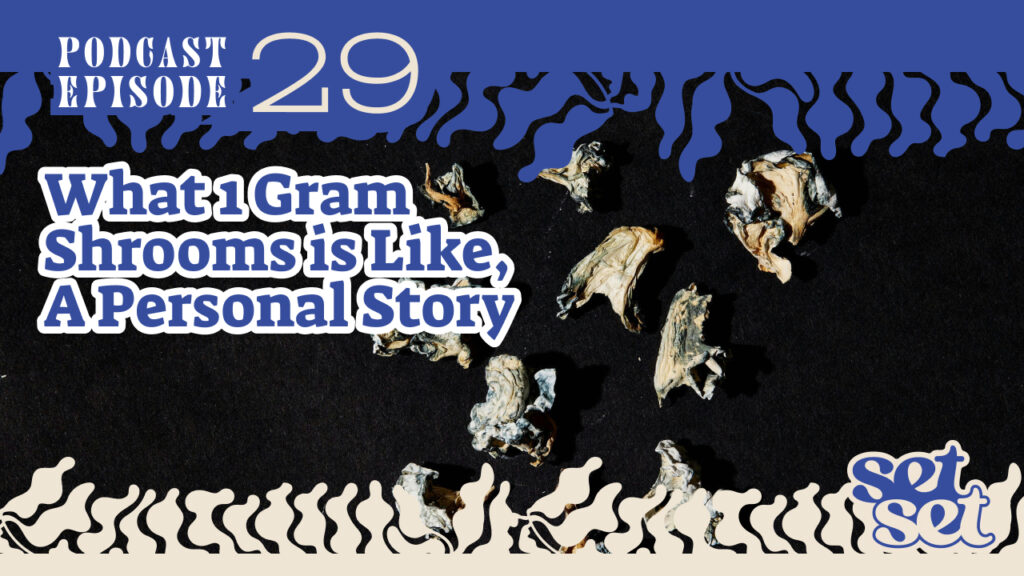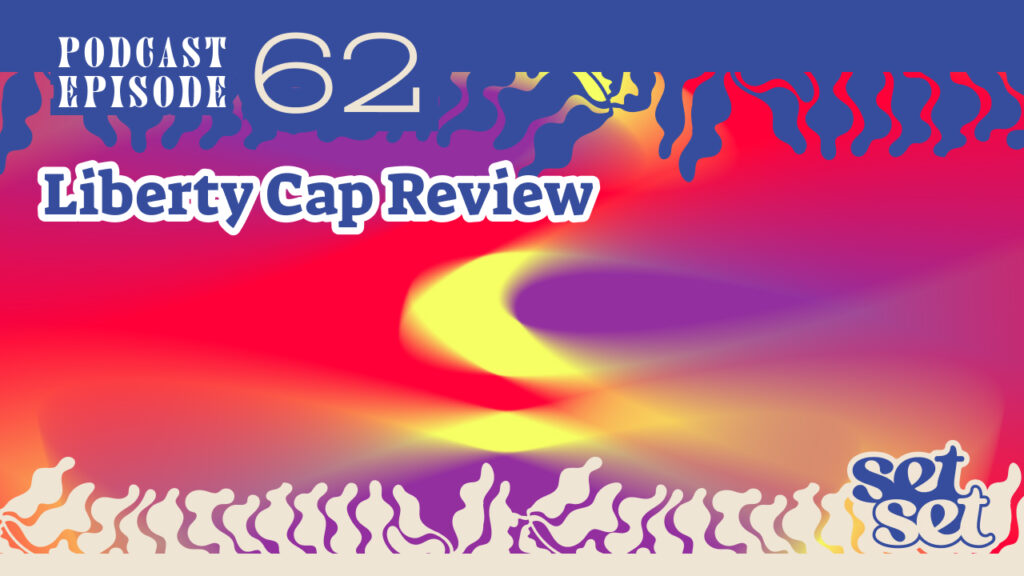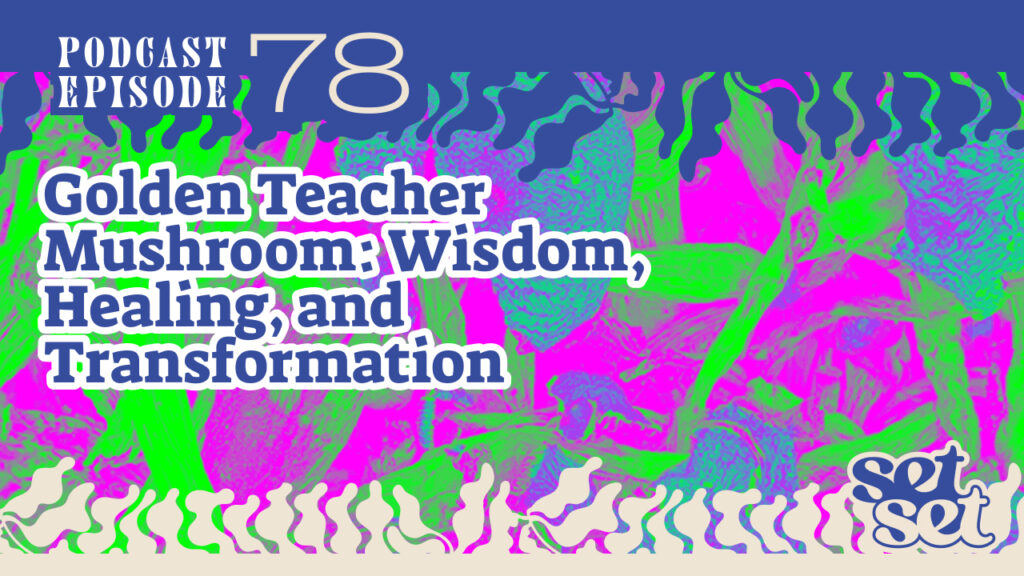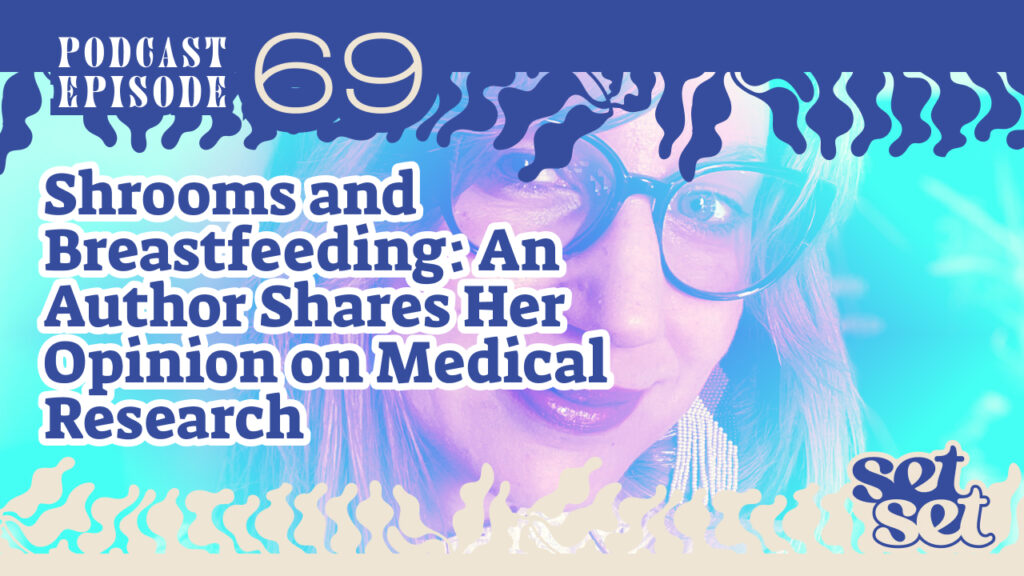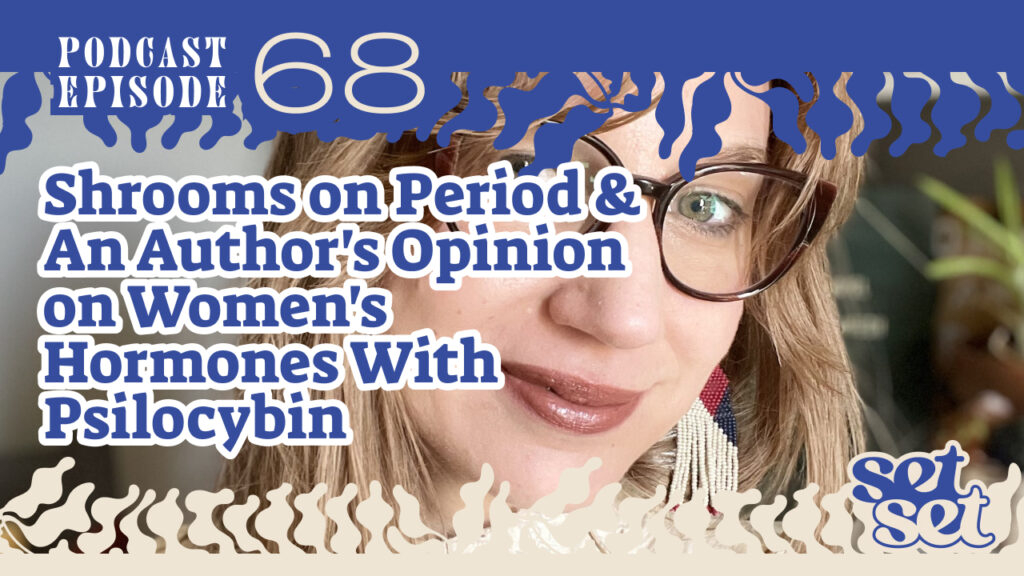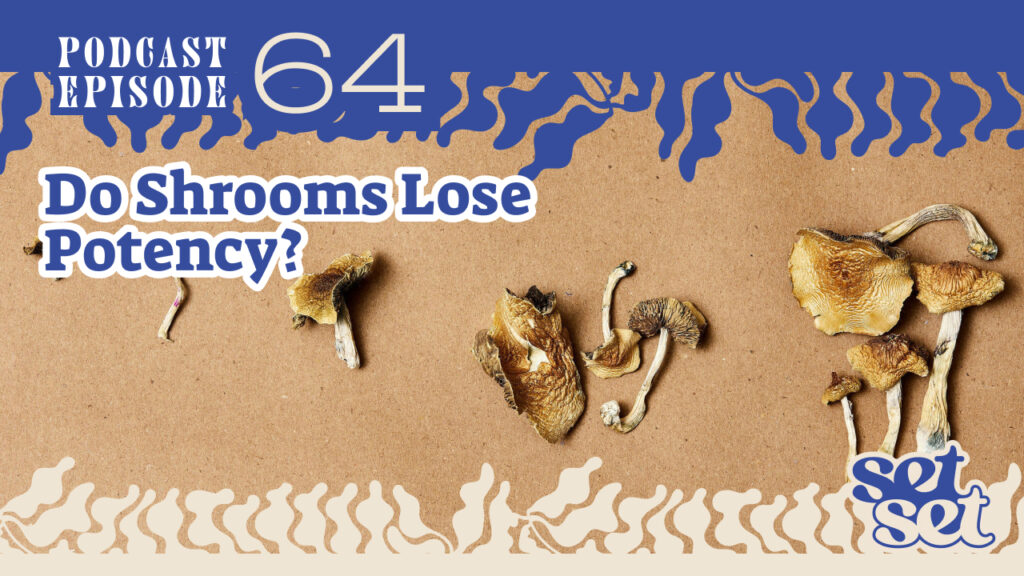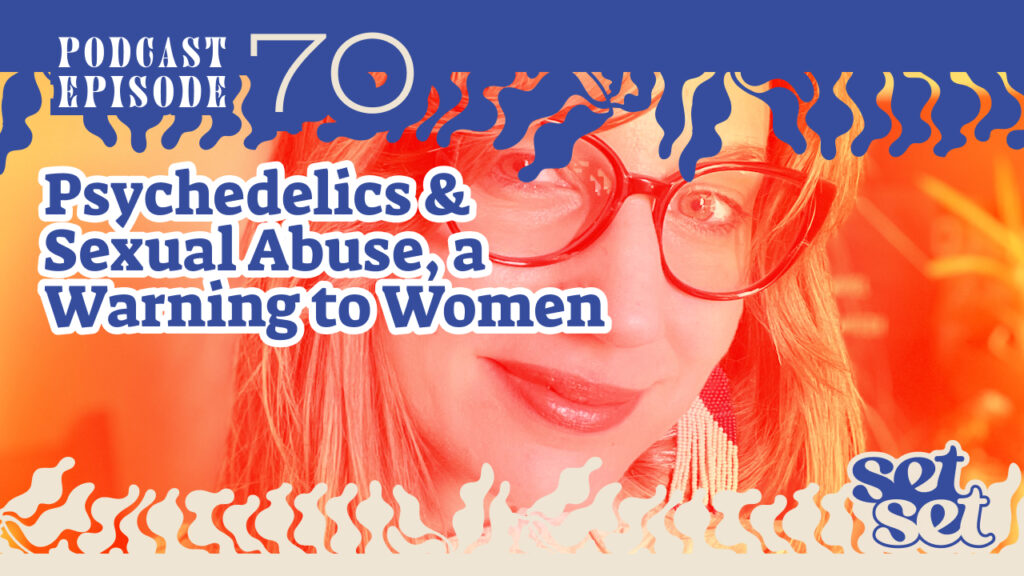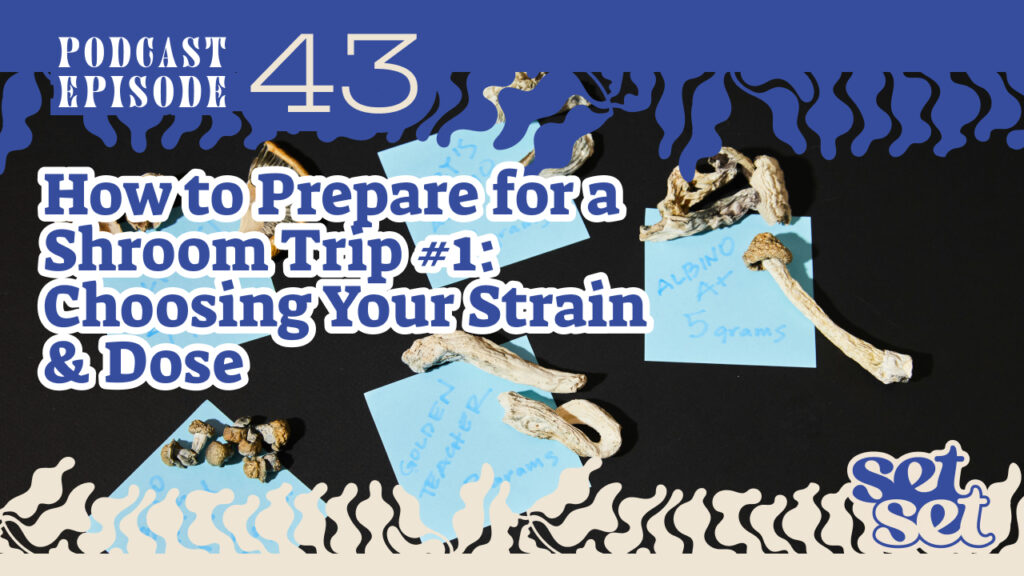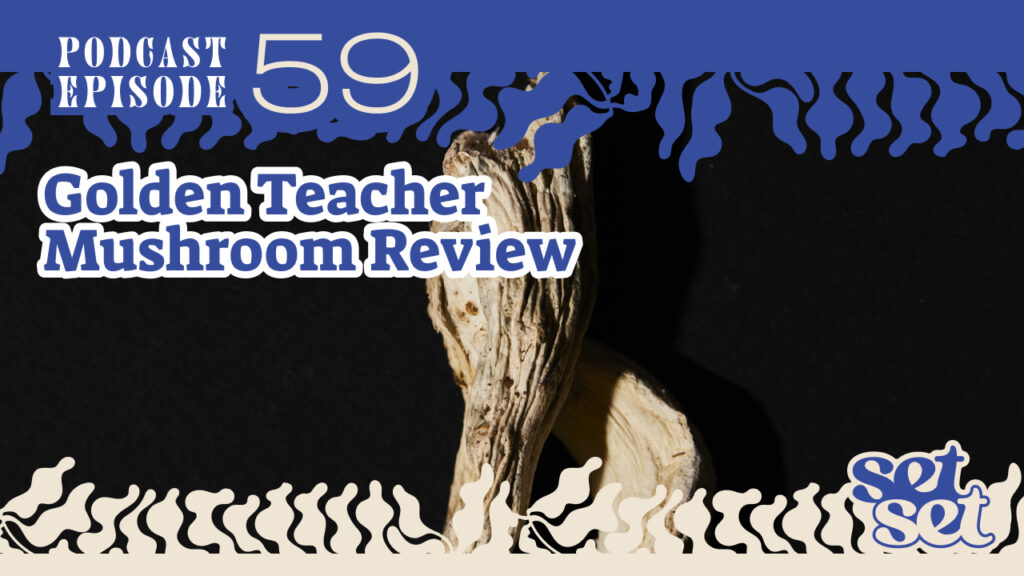0:00:00.0 Dr. Bridget Canahan, Field Trip Heath: It’s now considered the practice of mind-body medicine, which is really, it starts in the center, and the well-being comes from a sense of self. And that we’re starting to understand that there are frequencies and patterns of energy related to how we think about things that can affect our hormones, can affect our neurotransmitters. Our emotions affect the way that chemicals in our body are being released and they affect how our DNA is expressed in certain proteins.
[music]
0:00:31.9 April Pride, host: Hey, I’m a April Pride, your host on The High Guide Podcast. This is the show for women who have an open and curious mind, and this is a show all about women changing their lives thanks to altered states of consciousness. At the top of the show, you heard from Dr. Bridget Carnahan who explained the interrelationships of neurochemicals. My appreciation for these chemical tools is 100% about optimization. Let me ask you this, is it optimal to use a hammer to fix the toilet or a plunger to hang a picture? Exactly. So what if we approach psychedelic medicine in the same way. In order to do that, you must first understand that outcome you hope to achieve, your own brain chemistry and the tools available to you. In today’s episode, we’re focused on ketamine and medical experts answer this very simple question. How does ketamine affect the brain? So this is what we’re gonna get into today after the word of the week next and stay tuned to the almost end for our trip tips.
[music]
0:01:27.0 Dr. Bridget Canahan, Field Trip Heath: Today’s word of the week, neuroplasticity. Neuroplasticity, also known as neural plasticity or brain plasticity, is a process that involves adaptive structural and functional changes to the brain. It is defined as the ability of the nervous system to change its activity in response to intrinsic or extrinsic stimuli by reorganizing its structure, functions, or connections after injuries, such as a stroke or traumatic brain injury. To start things out, I thought it would be helpful to have Dr. Carnahan compare ketamine experience with an experience that most of our listeners may be more familiar with, a psilocybin journey. And before she frames our context, a quick recap on the default mode network, which you’ve heard about here on the show or the DMN. It’s where we surrender to our ego, or surrender our ego. We are born with processing tools within the mind that filter through our sensory inputs, absorbing the information it deems necessary to our survival. Psychedelic substances such as ketamine and LSD, psilocybin and DMT disable the default mode network, widening an overactive DMN that disrupts loops tapes of negative self-talk, so we can separate our true self from the information we’ve taken on as part of our story. Listen on as Dr. Bridget Carnahan starts to make sense of this for us.
0:02:47.1 April Pride, host: Well, my understanding is that what we know about how psilocybin is working is related to the default mode network, and that’s an area of the brain that controls how much of the brain is actually being activated at a given time. So human being has gone through this evolutionary process, where there are certain types of activities and needs for engagement in our day-to-day life that are most important, and so they’re sort of these grooves or these commonly travelled pathways that have been identified that we need to use regularly, and so they’re almost like automatic ways that our brain is utilizing certain networks, and the default mode network helps us keep in line with that. It keeps all the other sort of stimulation to a minimum, so that we are able to function fully in these areas that are most needed. What psychedelics are doing is… At least one of the things that they’re doing is deactivating that process, so that other parts of the brain that are less frequently used get stimulated, and we’re able to encounter regions of the human mind that are not used commonly in everyday life. As far as how ketamine works, it’s very different in terms of what the actual chemicals are from psilocybin. Psilocybin is serotonin network stimulant.
0:04:10.7 April Pride, host: Ketamine is not acting on serotonin, ketamine has a synergistic effect with multiple neurotransmitter pathways. Two of the big ones that have been researched are an NMDA receptor antagonism, so that means it’s competitively blocking the binding to the NMDA receptor, and so it’s de-activating that pathway. It’s also competitive inhibitor with the norepinephrine pathway, which is the AMPA receptor pathway, and so those two pathways are not able to show the same effects as antidepressants when they’re singled out. They seem to be needing each other synergistically to have the benefits that are being found with ketamine treatment. It does seem like the NMDA receptor pathway may have some sort of effect similar to what serotonin is doing to the default mode network on some level, but it’s not as direct, and it’s not as… I don’t think there’s as much clear evidence that there’s this single effect. A lot of what I talk to clients about in terms of how ketamine is working, has to do with the norepinephrine AMPA receptor pathway, and the reason for that is that in depression, there’s often a lot of anxiety involved as well.
0:05:29.0 April Pride, host: So norepinephrine is also called noradrenaline, it’s a hormone and a neurotransmitter that’s related to stress. It’s what we see is one of the components in the fight or flight response, and so when people have a history of a traumatic experience, if they’re getting triggered in some sort of PTSD type situation, where they’re experiencing the fight or flight response, or if they’re having chronic mini-trauma stimulants, where they have these little bumps of adrenaline in their system, noradrenaline in their system. The norepinephrine receptors, the AMPA receptors can be over-stimulated, and what happens when they’re over-stimulated is those cells determine that they don’t need so many receptors on the outside, the receptors are getting stimulated too much, so those receptors end up going inside the cell and those cells end up going offline in terms of their communication. And as a pattern we see in depression is what manifests when these cells go offline, ’cause these are cells that communicate with a couple of different regions of the brain.
0:06:32.1 April Pride, host: So when these cells go offline, there is decreased simulation to the prefrontal cortex, and that’s the area of the brain that is involved in executive function, planning, decision-making, sometimes what would be considered thinking about the future, motivation and then depression.
[music]
0:06:49.6 Dr. Bridget Canahan, Field Trip Heath: I’m going to review and simplify what Dr. Carnahan just said there. Depression is co-morbid with anxiety, which invokes chronic stress, and with it the production of cortisol which damages dendrites, and ketamine and psychedelics are suggested to repair dendrites to improve brain function and neuroplasticity. Kaia Roman from last week’s episode provides a great visual on the impact of these new dendrites and the power we have to make the most of them.
0:07:15.8 Kaia Roman, Psyched Podcast: What happens with ketamine is it creates this burst of new dendrites, and dendrites are like the little baby brain cells, that we’re creating new neurons or brain cells all the time, but when you have a ketamine treatment or literally any psychedelic treatment, you have a burst of a whole bunch of new baby brain cells, and then it’s like freshly driven snow and you get to form how those dendrites are going to connect together and form neural pathways.
0:07:44.2 Dr. Bridget Canahan, Field Trip Heath: Dr. Carnahan goes on.
0:07:45.3 April Pride, host: Some of the evidence we see about the dendrites on a cell, which are branches on a cell that are involved in communication, receiving messages, those start to branch and grow, and so this kind of growth, neuroplasticity, that side of things is more related to the glutamate NMDA receptor stimulation that’s happening.
0:08:08.1 Dr. Bridget Canahan, Field Trip Heath: You just heard Dr. Carnahan use the word glutamate a few times. So what is glutamate? Ketamine modulates glutamate, a major neurotransmitter that helps us process thoughts and emotions. Glutamate acts via stimulation of glutamate receptors including NMDA, which is a major glutamate receptor in the brain. According to the Cleveland Clinic, in your brain, glutamate is the most abundant excitatory neurotransmitter that is present in over 90% of all brain synapses. A powerful excitatory neurotransmitter excites or stimulates a nerve cell, making it more likely that the chemical message will continue to move from nerve cell to nerve cell and not be stopped. Glutamate is essential for proper brain function and multiple clinical studies suggest that the glutamatergic system plays an important role in the pathophysiology of depression. The following are three neural positive outcomes of ketamine-assisted therapy; helps regulate emotions and creates an anti-anxiety effect without unwanted side effects; increases neuroplasticity, which is the brain’s ability to adapt and heal; stimulates growth of neural pathways and disrupts thought loops that may contribute to anxiety and depression. Dr. Carnahan conveys what’s going on with her patients before they complete ketamine-assisted therapy.
0:09:20.0 April Pride, host: Definitely see people have a lack of motivation, they have a brain fog, they have a lack of interest and the other part of the brain that these cells communicate with is the area of the hippocampus and amygdala, and that part of the brain instead of having decreased activity is actually having increased activity because of these interneurons going offline. So when there is increased activity in the hippocampus and the amygdala, what happens is that people can have memories that are connected with a sense of fear, a sense of being unsafe, sort of a negative protect yourself, automatic response that is accentuated. And so we can get into cyclical patterns where we have a negative association with being in a social setting, and we can develop social anxiety disorder and having just these automatic sort of fearful responses to certain stimuli is more likely to happen when this pathway is under excessive stimulation.
0:10:21.0 April Pride, host: So ketamine comes in, and because it’s a competitive inhibitor to this neurotransmitter, it interrupts that cycle and it resets the cell so that the receptors can be expressed again on the outside of the cell, and this interneuron, the cell that communicates with various regions of the brain goes back to its normal function. That seems to happen and continue for a pretty short period of time at 72 hours to five days is some of the research, that I’ve seen, that this reset happens and lasts that long. So it’s not going to fix the problem. And I think that’s really important for people to understand that ketamine comes in and it resets this pattern, so it gives you a period of freedom from that habitual experience. It gives you this window where you can experience what it’s like to not be in that automatic fear-based response to not be in a brain fog.
0:11:16.2 Dr. Bridget Canahan, Field Trip Heath: And it’s during this period of freedom that we get to carve this fresh powder of connecting parts of our brain that have remained disconnected literally as a result of fear and the chemicals, the state of being induces. By modulating NMDA we can directly increase neuroplasticity levels in the brain, we can prime the mind to respond more positively to stimuli, they may otherwise trigger negative emotions and thought patterns. Kaia Roman wants our listeners to know that what you do during this period of freedom is critical to your ongoing positive mental health.
0:11:47.9 Kaia Roman, Psyched Podcast: If you’ve been in a state of depression for a long time, it’s gonna take a lot of ketamine to totally rewire that brain, and different people are wired in different ways. Some of us have a very strong negativity bias or a very strong amygdala activity, that means you’re in a state of fight or flight more often than others, often based on the trauma that you experienced in childhood, or even the trauma that you hold in your DNA from your ancestors. If you only do the ketamine and you don’t change anything else, then it’ll be more obvious, but anyway, most people, it’s like from the outside, it’s really obvious, they’re like a totally different person, and then you have to watch for those signs that start creeping back in. If it’s depression, those days when you’re just having a hard time getting out of bed. If it’s anxiety and those intrusive thoughts, you will notice them, your PTSD or addiction and then just get on top of getting the booster, don’t put it off, because these are just brain patterns. But honestly, I wrote I’m my book, “The Joy Plan”, about biohacking your brain to experience joy, and that’s literally what these tools are, ketamine and other psychedelics are tools that we can use to biohack our brains to experience joy.
0:12:53.1 Dr. Bridget Canahan, Field Trip Heath: Of course I’m always looking for ways to biohack my brain to joy, so I asked Lauren Swanson, lead clinician, at telehealth ketamine platform, Wondermed, the following:
0:13:02.0 April Pride, host: This idea of neuroplasticity, which we’ve touched on quite a bit, ketamine supports this, initiates it, but as does psilocybin. So I’m curious if microdosing psilocybin between ketamine treatments, if there’s an extra benefit to that, or you’re just wasting your capsules or ceasing your micro-dosing regimen, but while you’re undergoing ketamine treatments, but then maybe picking it up can help to sustain some of the positive results. Kaia, I’m really curious about that.
0:13:32.6 Kaia Roman, Psyched Podcast: Yeah, you are definitely on to something, and that’s being researched right now, is how do we combine these. And even with NMDA coming on, the lab, hopefully it will be legal next year. How do we really combine these to get the best effect and how do we actually say, “This patient profile would benefit from this combination and maybe this person only, maybe only ketamine?” As it is now, that hasn’t been… There’s just not enough medical evidence to support what that means, at what dose, how do we separate, how long do we go between dosing? So I can’t speak to actually suggesting that someone do that. All that I can say is that there is absolutely benefit to what you’re saying, and we as the medical community are looking into that, and I think that if we’re to have this conversation in two years, it would be very different.
[music]
0:14:24.1 April Pride, host: Of course, the go-to medical intervention for depression are anti-depressants. I pulled the following information from Wondermed’s website, because it provides context as to why 30% to 50% of patients treated with anti-depressants experienced no improvement in their symptoms, leaving a large population without adequate treatment for their depression. Developed in the 1950s and the golden standard for psychiatric treatments for over 50 years, the monoamine theory of depression and monoamines are serotonin, norepinephrine, dopamine. This theory hypothesizes that the pathophysiologic basis of these disorders is a deficit in the levels of monoamines in the central nervous system. Limitations of the monoamine hypothesis of depression as it is known, emerged in the 1990s, at which time it was proven that decreased levels of monoamines don’t induce depression in healthy people, nor do they cause worsening of symptoms in depressed patients. Patients who do eventually respond to pharmaceutical antidepressants experience a delay in their improvement of their symptoms due to the fact that these anti-depressants take weeks or even months before becoming effective. Ketamine blocks the NMDA receptor, which causes anti-depressant effects as rapidly as 24 hours after administration. These effects have been found to last days or even weeks.
[music]
0:15:40.4 April Pride, host: You may recall earlier in the episode when Dr. Carnahan said that ketamine acts on serotonin receptors. Lauren is responding to the fact that I had to cease my stimulate meds on the days that I was having ketamine-assisted therapy, but I could continue to take my Wellbutrin which is an SNRI.
0:15:58.6 April Pride, host: I will first start with the reason why it’s okay to continue your Wellbutrin, which is an SNRI or for people who are in S or on an SSRI. If they’re on Lexapro or Prozac, because those work on serotonin and norepinephrine, whereas ketamine works on glutamate, so you can use them safely together, you don’t have to worry about that compounding effect of the serotonin neurotransmitters. As far as the Adderall as a stimulant, and so if that’s the reason why we don’t want you to use it ideally on the same day as the ketamine, because the ketamine is also a stimulant, so any time that you’re compounding two things that have the same negative side effect, you just have to take that with caution. So one drug class that we encounter a lot would be your benzodiazepines, which affects a system in the brain called GABA, and that causes you to really relax. It’s a kind of like a rest and digest neurotransmitter, and ketamine is actually an excitatory neurotransmitter, even though it makes you feel peaceful and relaxed in the session, it’s a stimulant, so it’s actually excitatory.
0:17:03.6 Lauren Swanson, PA-C, Wondermed: So the reason why we don’t want you to use those medications together, is there’s actually is a medical interaction when you take those close together. Whereas, something like the stimulant, we just don’t want you to use it, because it’s a stimulant on a stimulant, the same thing with coffee. Now, we do tell patients, there are some people that have to take their Vyvanse or their Adderall or whatever it is, and so we talk to that individual and figure out really a good plan for timing and spacing those out on the same day, but just space out enough so that it wouldn’t be a problem. And actually you can do the same with the benzodiazepines as well, as long as there’s enough space between. But every individual, we always… I mean, that is very important, is looking at what are the medications they’re on, what are the supplements they’re taking, and how do we really make judgment calls about what should be stopped, what should be paused to really make this a safe medication?
[music]
0:17:51.9 Dr. Bridget Canahan, Field Trip Heath: Some of my research has made me question why this is something that is not being prescribed for ADHD in terms of how it’s working with the prefrontal cortex and the role of glutamate. I’m a novice here, but it seems like when I sat down on my desk the Tuesday morning after my second treatment, and I worked in a way that I hadn’t worked in years, that there may be something there, too.
0:18:15.8 Lauren Swanson, PA-C, Wondermed: That is something that we see over and over and over again, and it really does improve focus, even in people who don’t have ADHD, but we hear that over and over and over again. People that are on prescription medication before that are feeling like maybe they don’t need it every day, maybe they can reduce their dosage.
0:18:33.7 Dr. Bridget Canahan, Field Trip Heath: Since I started treatment, my stimulant meds are down by half, didn’t have a diagnosis as a child, I had mine eight years ago, so I haven’t been on stimulant meds as long as a lot of people have. So I think people are trying to think about the long-term effects of these things, and so it’s just nice to know that maybe you have another option to consider as research catches up with this anecdotal information, that you get from your patients.
[music]
0:18:57.7 Dr. Bridget Canahan, Field Trip Heath: I did find research connecting the malfunction of glutamate and dopamine with increased cognitive complications related to ADHD from 2012. I linked to the study in the shownotes of this episode. This feels like a field of research that should have been completed by now, and I hope to see more research take on the relationship of ketamine, glutamate and ADHD in the near future. Similar to patients who don’t respond to anti-depressants, adults with an ADHD diagnosis, 20% to 30% don’t tolerate the pharmaceutical options. This is why an alternative like ketamine may prove so revolutionary for a variety of mental health diagnosis. Even still, Dr. Carnahan explains why ketamine and other psychedelics may not be a fit for all.
[music]
0:19:38.9 April Pride, host: There are people who are not having such a deep experience or getting carried away by the chemistry, the neurochemistry of the experience, because of the way they metabolize ketamine. There are people who maybe are on some sort of medication that could compete with ketamine for binding or make them less sensitive to ketamine in some other way. There can be medication interactions, there can be what the individual chemistry of a certain person is. There are genetic tests that look at “How responsive someone might be to the brain-derived neurotrophic factor or the metabolic benefits for neurons of ketamine.” We can look at that and we are individuals in terms of how we process and metabolize different substances, so it’s complex to understand how someone responds.
0:20:31.0 Dr. Bridget Canahan, Field Trip Heath: And what about women? We know that women are more sensitive to THC, depending on where they are in their cycle, so might ketamine be affected by our monthly hormonal fluctuations?
0:20:40.3 April Pride, host: I think that there are some interactions with estrogen and the norepinephrine pathway, which is very important in ketamine, and I’ve definitely had clients say that they feel more sensitive to ketamine at certain times in their cycle, but not everyone will say that, so it’s an area where we definitely could use more research and looking at what’s going on hormonally with the neurotransmitters.
0:21:09.3 Dr. Bridget Canahan, Field Trip Heath: In addition to anti-depressants, ketamine and other psychedelics, neuroplasticity can also be enhanced through non-medicinal modalities such as exercise, meditation, journaling, time in nature and sleep. In a later episode, we’ll review the more integrated practices of self-healing modalities alongside ketamine-assisted therapy to encourage patients to create lasting changes in their mental health. Like ketamine, these modalities give us freedom from negative self-talk by quieting the DMN, making space to find more peace of mind.
[music]
0:21:43.4 Dr. Bridget Canahan, Field Trip Heath: As we’ve covered in past episodes of this show, The Body Keeps the Score and so brilliantly outlined in the book by the same name by Bessel van der Kolk, which I’ve linked to in the show notes of this episode. Ketamine is also being employed to treat chronic pain, and the way it interacts with our neurochemistry and our trauma is at the heart of this intervention for this condition. A core benefit of ketamine-assisted therapy is to find a reprieve from emotional and physical pain that remain from, say, childhood trauma and as such, ketamine is FDA approved to use off-label for therapeutic purposes. It’s approve-use is as an analgesic, and although ketamine is FDA-approved to use, off-label, for therapeutic purposes related to treatment-resistant depression and major depressive disorder, it’s important to remember that ketamine is approved as an analgesic, a drug used to treat pain, and it is increasingly being used in acute, chronic and palliative pain management.
0:22:38.2 Dr. Bridget Canahan, Field Trip Heath: Ketamine can effectively reduce pain by working centrally and blocking NMDA receptors. This inhibits glutamate, which is an excitatory neurotransmitter involved in pain-signal transmission. We’re going back to glutamate, a research study linked in this show notes entitled “Reduced Glutamate in the Medial Prefrontal Cortex” is associated with emotional and cognitive dysregulation and people with chronic pain found a decrease in glutamate in the medial prefrontal cortex has been extensively found in animal models of chronic pain. The direct correlation between people with chronic pain and significantly higher scores in harm, avoidance, depression and anxiety compared to control subjects without pain. High levels of harm avoidance are characterized by excessive worry, pessimism, fear, doubt, and fatigue. The current formulation of ketamine use today allows for lower dosing, and this enables beneficial analgesic effects while avoiding psychoactive effects, so just hallucinations.
0:23:33.9 Dr. Bridget Canahan, Field Trip Heath: I leave you with today’s trip tips. Researchers speculate that depression as a result of neuronal dysfunction or deficiency largely brought about by chronic stress of various sorts. Ketamine infusions rapidly restore neural activity to regulate mood states. Ketamine instigates the release of glutamate, which causes synapses to form and fire and strengthens neuronal activity. Thank you for listening to this episode of The High Guide. I’m your host, April Pride. Please check out our website, thehigh.guide for our shroom strain reviews and guide to psilocybin. Tune in next Friday for another episode of The High Guide, a show all about women changing their lives thanks to altered states of consciousness.
[music]

